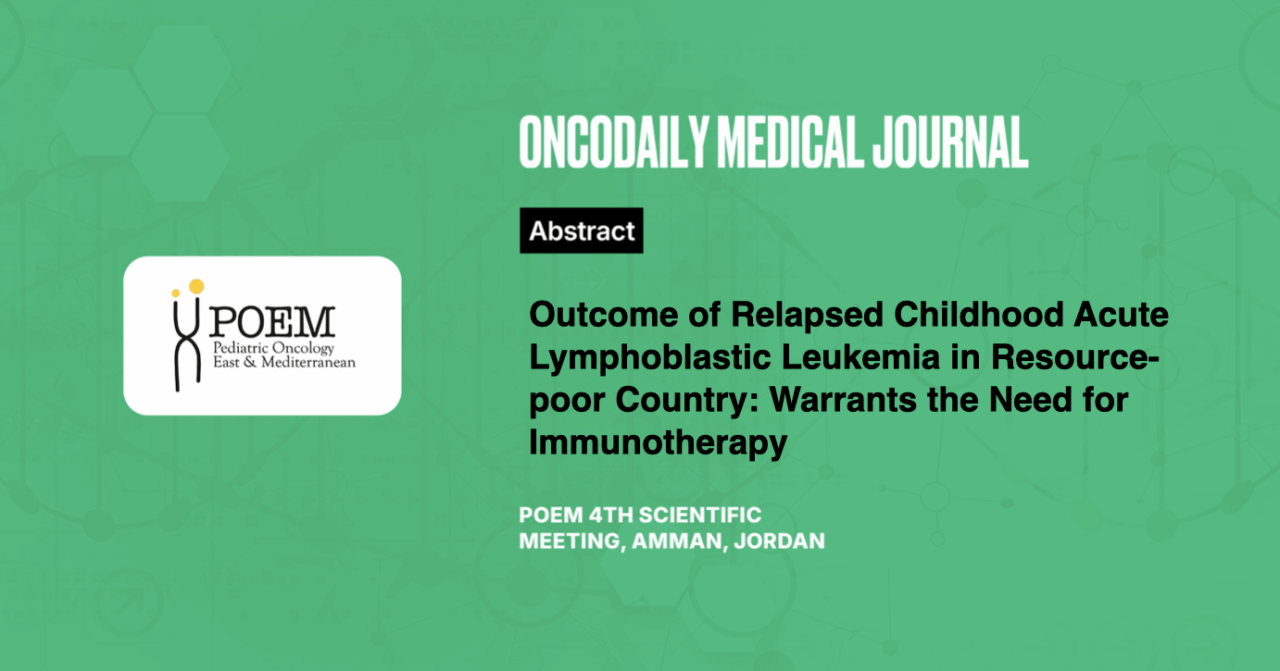Outcome of Relapsed Childhood Acute Lymphoblastic Leukemia in Resource-poor Country: Warrants the Need for Immunotherapy
Abstract
Introduction: Relapsed acute lymphoblastic leukemia (ALL) has remained challenging to treat in children, with survival rates lagging well behind those observed at initial diagnosis.
Methodology: From December 2003 until August 2023, children/adolescents (<18 years at diagnosis) with ALL in first and subsequent relapses were studied. Treatment of relapse consisted of reinduction regimens followed by intensive continuation therapy and hematopoietic stem cell transplantation (HSCT) in selected patients.
Results: The study included 160 patients with a median age of 5 years (range: 0.4-19.8 years), followed for a median of 71 months (range: 4-248 months). Sites of relapse were: bone marrow (BM) in 64%(N=103) of the patients, combined relapse in 19 %( N=30), and isolated extra-medullary Relapse (IEM) in 17%(N=27). Complete remission (CR2) rates for all patients were 64% and vary according to time and site of relapse (100% for IEM, 56% for isolated BM/combined: 90% for late relapses, and 39% for early/very early relapses). The estimated 5-year EFS and OS for the whole group were 30% and 40 %, respectively.
Five-year OS for patients with BM relapse was 29%, combined relapse 58%, and IEM 66%. Five-year OS for patients with very early relapse was 12%, early relapse 36%, and late 74%. In multivariable analysis, worse OS was observed in patients <1 or≥ 10 years at diagnosis (p=0.02), BM (p=0.019), and very early relapses (p=0.009). In multivariable analysis, worse EFS was observed in patients with BM relapse ( p=0.02)and early relapse(p<0.001).
Conclusion: At our center, more than one-third of relapsed ALL patients were cured. However, survival rates are low in high-risk relapsed ALL (very early and isolated BM relapses). Conventional chemotherapy and adequate supportive care failed to salvage this high-risk group, indicating the need for immunotherapy as a bridge to allogeneic hematopoietic stem cell transplantation.





